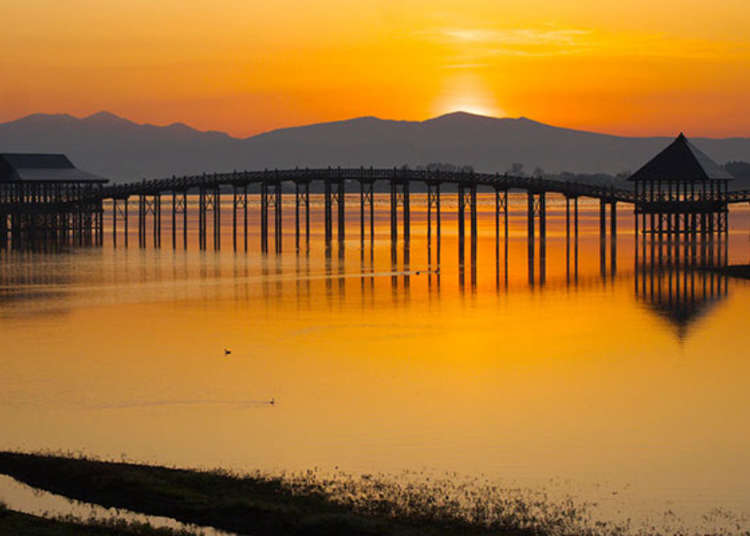
Tsuru-No-Mai Bridge is a top-rated attraction in Aomori Prefecture that gained fame through advertisements made by JR East.
With such picturesque scenery, Tsuru-No-Mai Bridge is now a hot favorite among Japanese and foreign visitors, photographers, and sightseers alike. This time, we’ll be giving you a rundown of how to make the most of your trip to this traditional Japanese bridge!
- Table of Contents
Getting to Tsuru-No-Mai Bridge - In a town of Japanese cranes
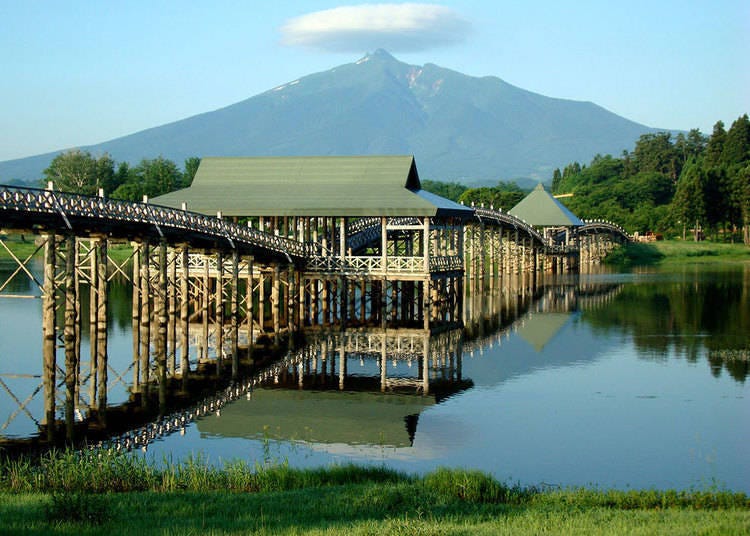
Tsuru-No-Mai Bridge is in the western region of Aomori Prefecture, in Tsurata-machi, a small town of around 13,000 people.
To get there, you can take the JR Gonō Line from Shin-Aomori Station, and the journey takes about one hour to Mutsu-Tsuruda Station.

Sandwiched between the major cities of Hirosaki and Goshogawara is Tsuruta-machi, deigned in the 1980s as the go-to town for watching tsuru - Japanese cranes.
The city doesn’t hold back on the crane motif either; when you alight at Mutsu-Tsuruda Station, the melody of the train pulling in is the call of a crane, and the ceiling and walls are decorated with cranes as well.

From Mutsu-Tsuruda Station, it’s about six kilometers to Tsuru-No-Mai Bridge. After that, it’s recommended to go by taxi. Though it normally costs 2,000 yen one way, there’s a limited-time discount that cuts the trip to just 1,000 yen (see the Tsuruta-machi website for more details).
Recently, many people walk to the bridge for sightseeing and exercise, and others who cycle over as well.
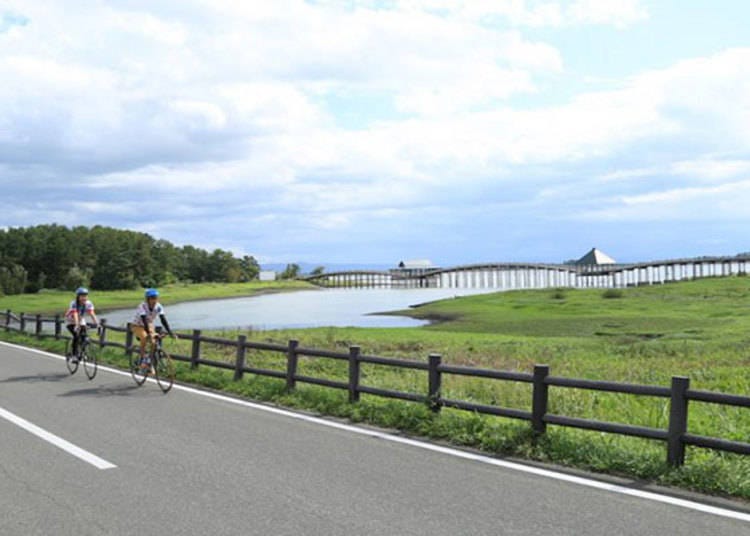
Within Tsuruta-machi, everything from the crane-themed objects and sprawling fields, to the beautiful retro-style architecture, make for some very atmospheric scenery indeed.
Since you’ve already made the trip over, be sure to make your way to Tsuru-No-Mai Bridge while enjoying the landscapes all around you!
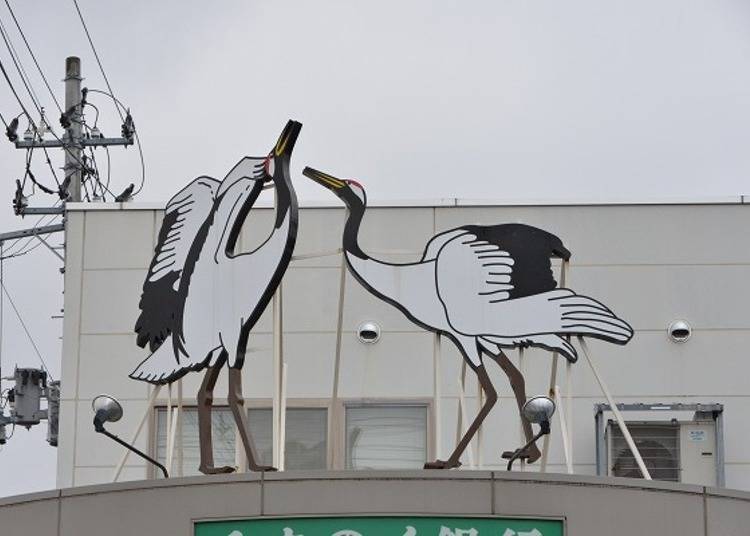
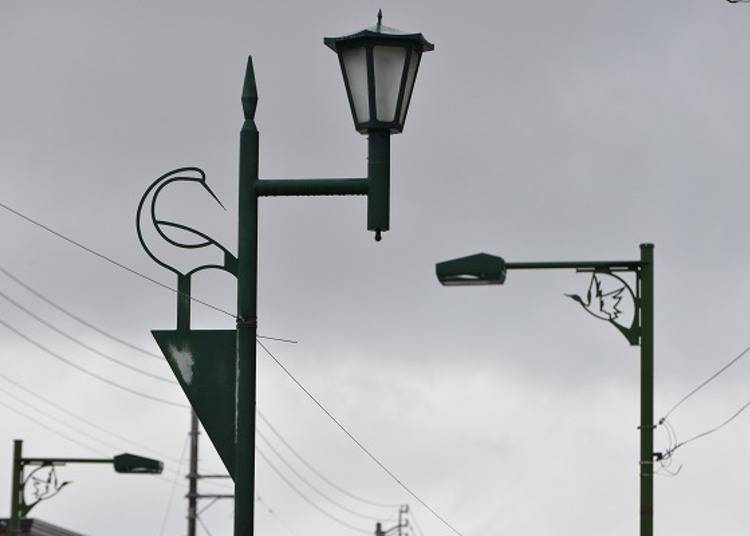
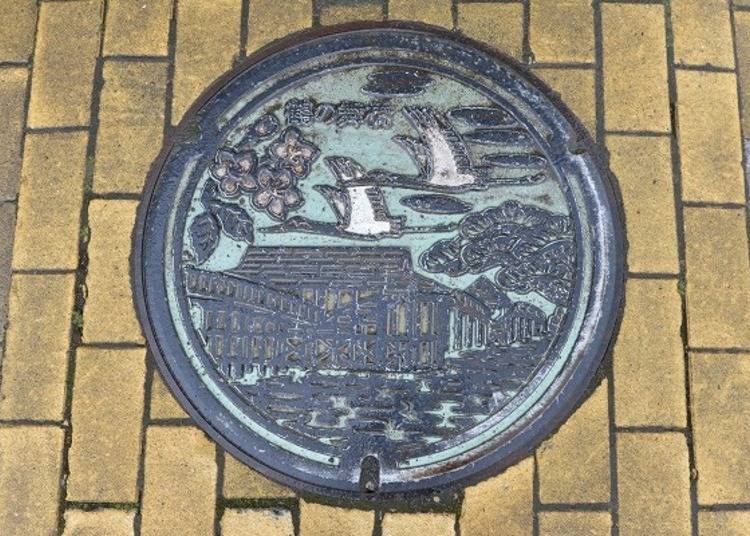
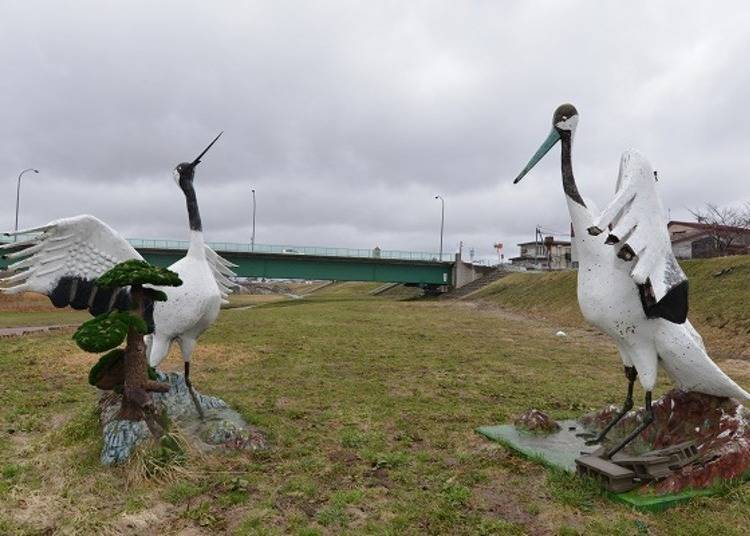
The scenery changes dramatically with the seasons and weather
Tsuru-No-Mai Bridge is built over Tsugaru Fujimiko Lake, originally constructed for irrigation purposes during the Edo period.
When construction finished in 1994, cranes started coming to the bridge in flocks, resulting in the name “Tsuru-No-Mai Bridge,” which means “dance of the cranes” in Japanese.

Tsuru-No-Mai Bridge is approximately 300 meters long. Made of cypress wood from Aomori, it is the longest triple-arched wooden bridge in Japan, as of May 2018. The bridge design draws reference from Yamaguchi Prefecture’s Kintai bridge.
Each of the three arches is approximately 100 meters long, with the two stages in the middle having taken three years to construct. The arches are eight meters tall at the highest point, about the same height as a three-story building.
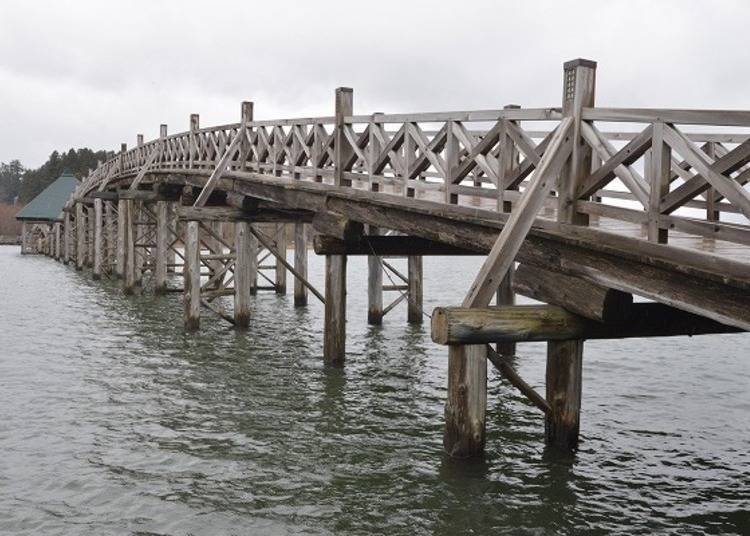
In recent years, Tsuru-No-Mai Bridge has become one of the regular themed spots for photography competitions in Aomori Prefecture. Depending on the time of day, you can capture photos of Tsuru-No-Mai Bridge with vastly different views and emotions.
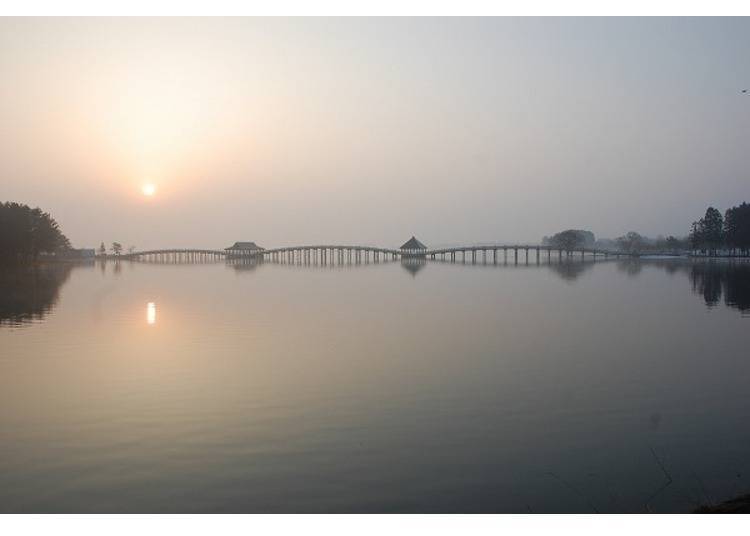

Depending on the season and weather conditions, you can take almost otherworldly photos of Tsuru-No-Mai Bridge. The harmony of nature with the bridge makes for a fairytale-like scene, adding to the area's charm.
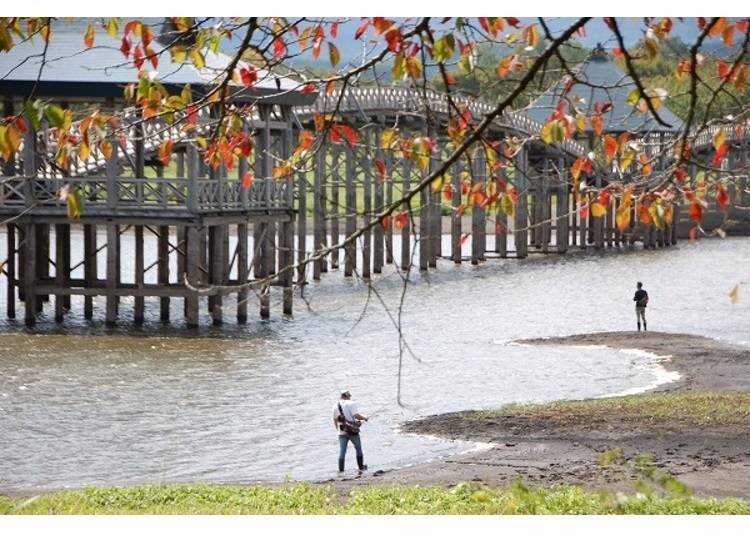
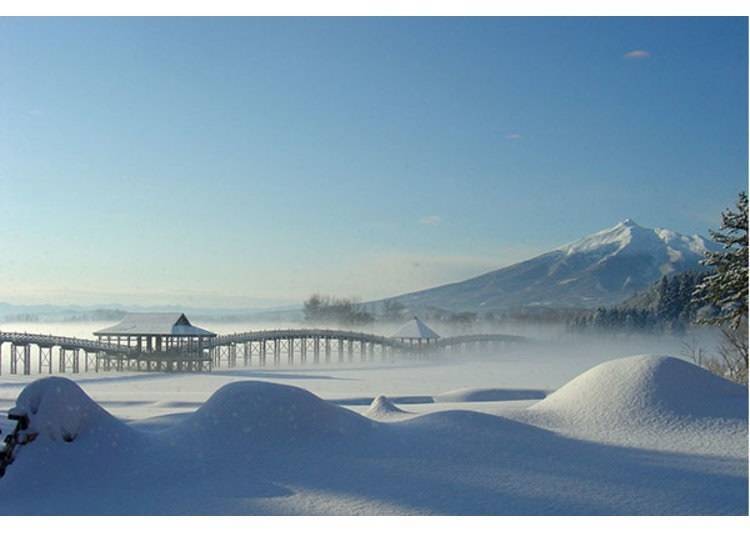
Takenami Masaaki, whose photo of Tsuru-No-Mai Bridge is used on JR’s poster, guided us around the bridge this time. He spent one week waiting for the moment to catch the perfect shot, with Iwaki-san mountain reflected clearly on the river.
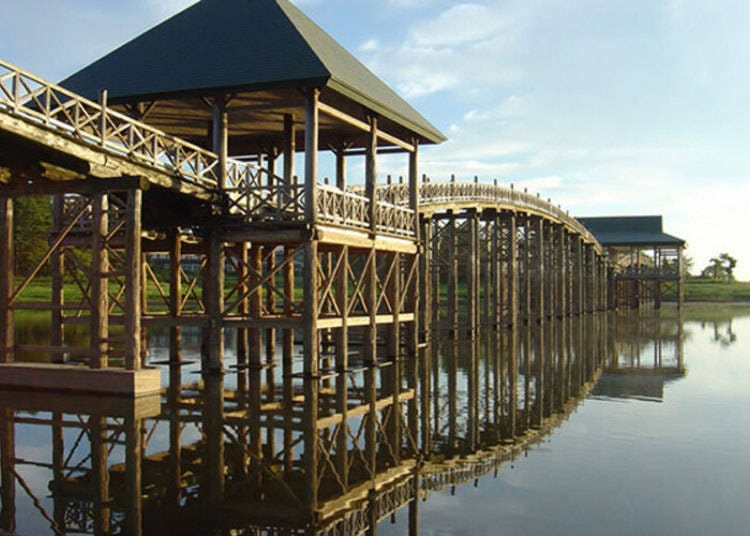
Whether you’ll get the perfect shot is not just up to luck, it takes a lot of patience and time to wait for that one fleeting moment to happen. So within the limits of your own time and schedule, enjoy your time taking photos that move your heart!
-
Tsuru-No-Maihashi Bridge鶴の舞橋
- Address 81-150, Mawarizeki-osawa, Tsuruta-machi, Kita-Tsugaru-gun, Aomori-ken
- Phone Number 0173-22-2111
Free entry
Top 3 spots for that perfect picture
While Tsuru-No-Mai Bridge was being constructed, Fujimiko Park, also in the vicinity, was renovated. At 12.4 hectares in size, the park has a playground and accommodations, and stores (only open in summer).
You can observe red-crowned cranes up close in the park as well. Of course, within the park are also photo spots.
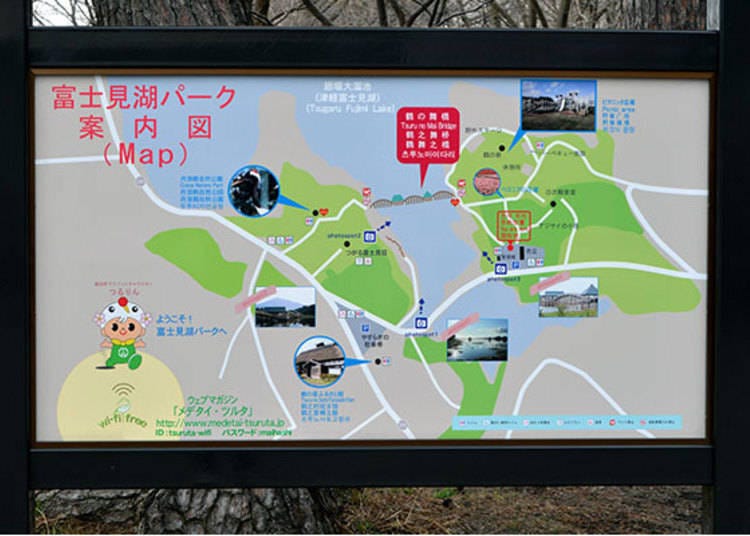
There are three recommended photo spots. The first is the point near the Iris Path, which is the closest to Tsuru-No-Mai Bridge. With its beautiful peak like Mount Fuji, Mount Iwaki is often called “Tsugaru-Fuji” because of this, and you can see it in the background, framing Tsuru-No-Mai Bridge in the foreground.
The image used on the JR poster of the bridge was taken close by. This spot is also recommended if you’re taking photos on your smartphone, without a zoom lens.
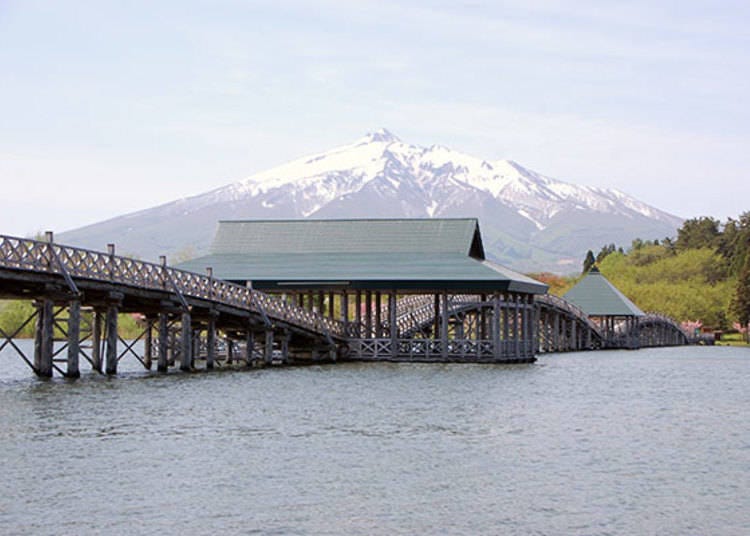
The second spot is about 300 meters northeast of the bridge, and it allows you to capture a full side view of the bridge. As you can see Tsuru-No-Mai Bridge in its entirety, you can see the motif of cranes in flight in the bridge's design. On clear days, you can see the Hakkōda mountains in the background too.
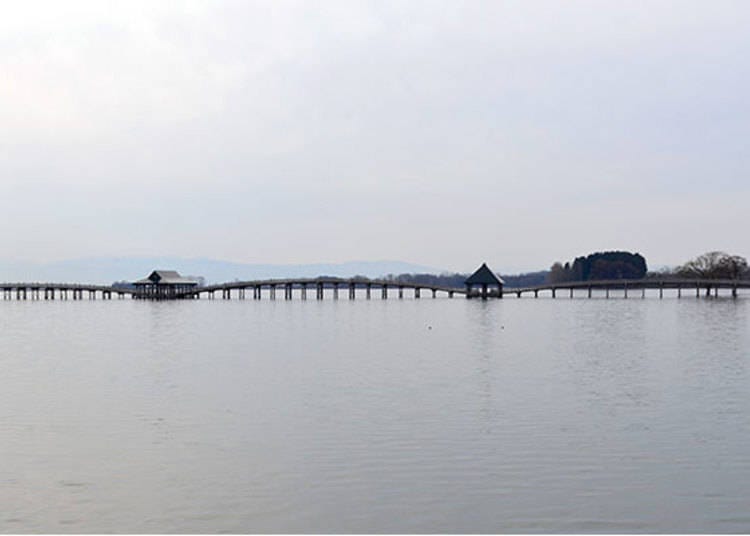
The third spot is the view of Tsuru-No-Mai Bridge from the parking lot near the stores, in the northwestern corner of the park.
You can see Mount Bonju in the backdrop of Tsuru-No-Mai Bridge, a mountain in-between Goshogawara City and Aomori City.
As Tsuru-No-Mai Bridge is in the center of the Tsugaru Heiya region, the view of the bridge can change drastically depending on where you’re looking from.
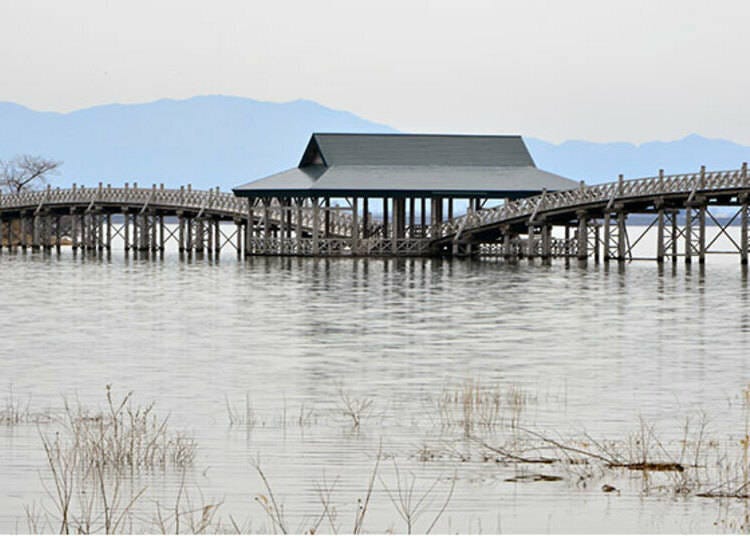
One draw of Fujimiko Park is the multiple views of Tsuru-No-Mai Bridge from within the park. Besides the designated spots listed, you can look around the park for your own perfect photo spot as well.
-
Fujimiko Park富士見湖パーク
- Address 81-150, Mawarizeki-osawa, Tsuruta-machi, Kita-Tsugaru-gun, Aomori-ken
0173-22-6211 (Fujimiko Park Administration)
Free entry
Mother Tree: A new place to get up-close and personal with Japanese cranes
Near Tsuru-No-Mai Bridge, you can meet red-crowned cranes too. Tsuruta Town's Japanese Crane Nature Park is located in Fujimiko Park and close to Tsuru-No-Mai Bridge. There are sixteen red-crowned cranes in residence, separated into six booths, and viewing them is free.
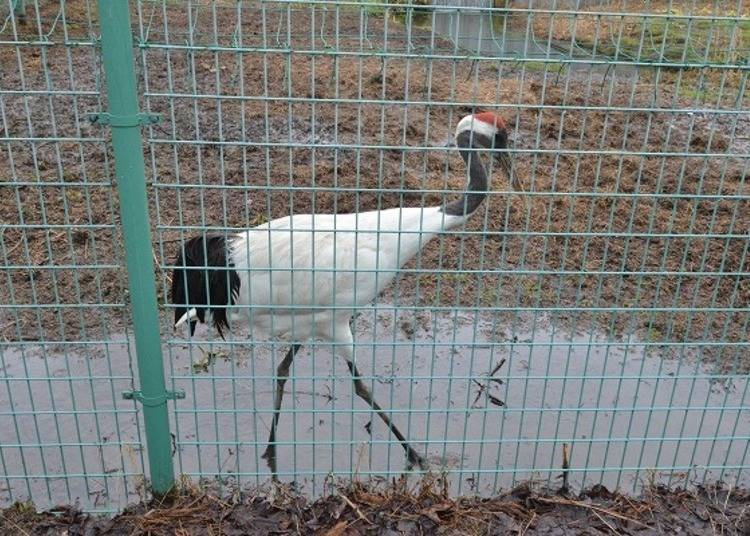
Comparing the similarities and differences between the crane-themed objects in Tsuruta-machi to the real cranes makes for an enjoyable pastime.
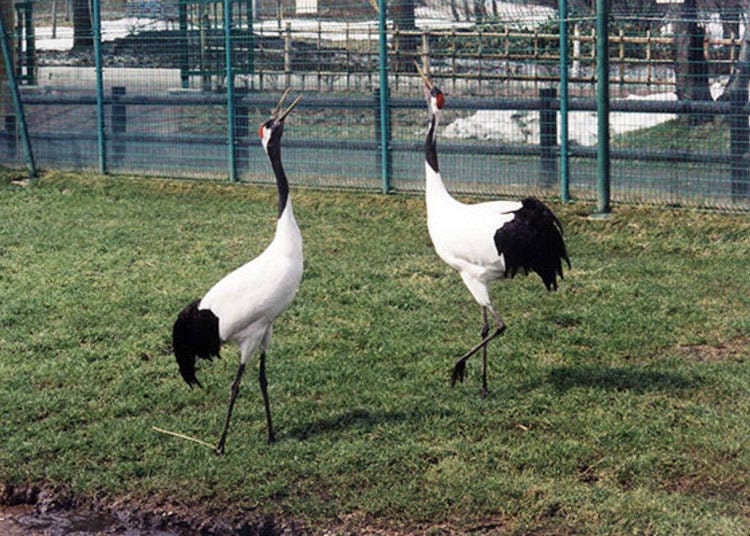
-
Tsuruta Town Japanese Crane Nature Park丹頂鶴自然公園
- Address 81-150, Mawarizeki-osawa, Tsuruta-machi, Kita-Tsugaru-gun, Aomori-ken
0173-22-2111 (Tsuruta-machi Town Hall Tourism Planning Division)
Opening hours: 9:00 a.m. to 4:00 p.m.
Free admission
Open year round
Finally, we will also be introducing a new spot in the area, Tsuruta Mother Tree. While Fujimiko Park was being renovated, the trees in the area were cleared, but at the request of the children living there, this single tree was left alone. This is the tree that grew from the bed of Fujimiko Lake.
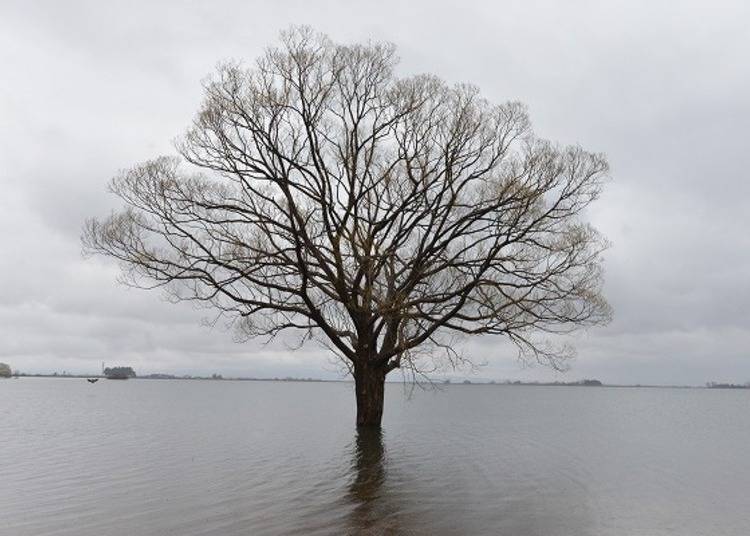
As Fujimiko Lake is used for irrigation, the water level changes with the seasons and weather. As such, when the lake is full, the stages of Tsuru-No-Mai Bridge will be just full of water. At this point, you can see this single tree growing from the river, like a sight from a secret world.
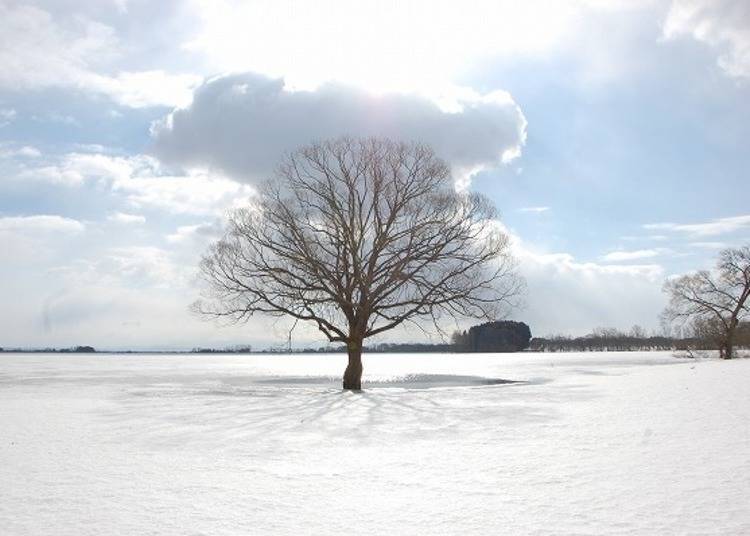
Guide to Tsuruta-machi - Town of Japanese cranes!
After enjoying the splendid views of Tsuru-No-Mai Bridge, why not bring back some souvenirs from the town as a memory of the tour trip? First, we’ll introduce to you “Tsuru-no-wasuremono,” a specialty of “Angelic Tsuruta Shop,” a famous confectioner with three shops in the prefecture.
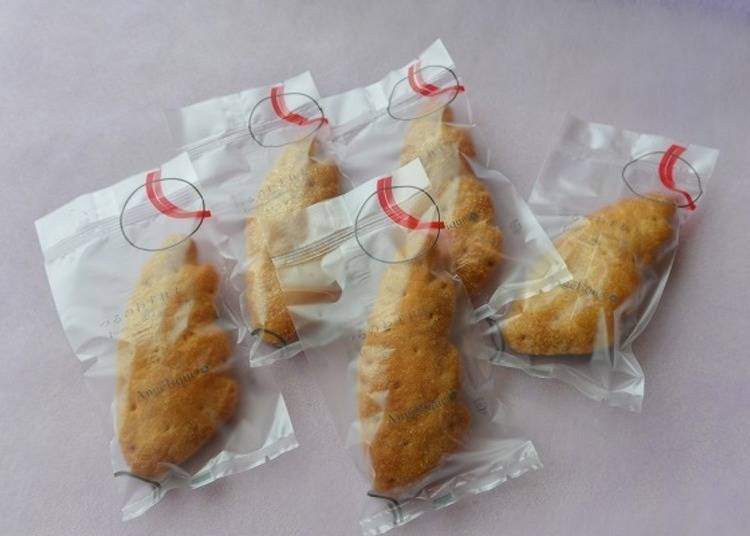
A pie-style cookie in the shape of a crane’s wing, the crunch of the pie complements the elegant sweetness of this snack. “Tsuru-no-wasuremono,” which means “what the crane had forgotten,” is sold only in the Tsuruta shop, so be sure not to miss it! We recommend you to try other sweets available at the shop too.
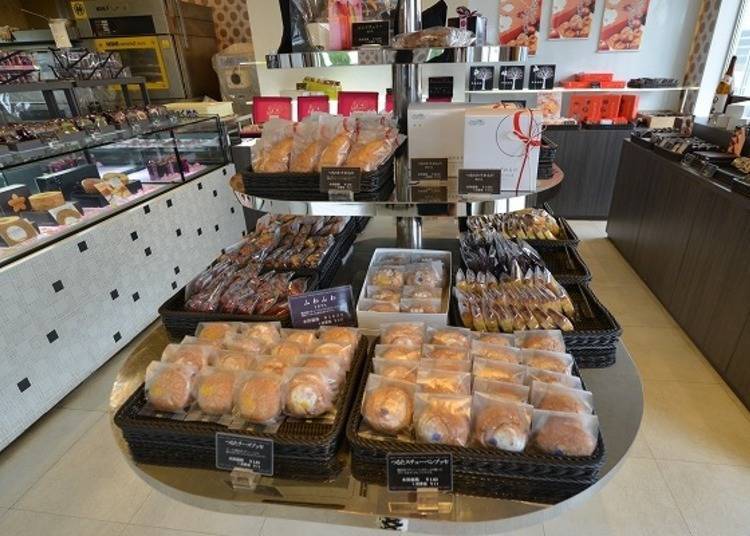
-
Angelic Tsuruta Shopアンジェリック 鶴田店
- Address 309-1, Tsuruta Koizumi, Tsuruta-machi, Kita-Tsugaru-gun, Aomori-ken
- Phone Number 0173-23-1880
Business hours: 9:30 a.m. to 7:00 p.m.
Closed on Tuesdays
Next, we’ll be introducing a delicacy that makes use of Steuben grapes, renowned for their hardiness and ease of cultivation in cold climates.
Tsuruta-machi is the only place in Japan that produces Steuben grapes, according to a 2009 census by the Ministry of Agriculture, Forestry, and Fisheries. As the town is located on the same latitude as New York, it has a similar climate that makes it suitable for cultivating Steuben grapes, and from the latter half of the 1960s, they started being cultivated as crops here.
In October 2017, the first winery in Tsuruta-machi, WANO Winery, opened its doors. The winery produces wine and sweets using Steuben grapes. You can view the production areas and dine in as well.
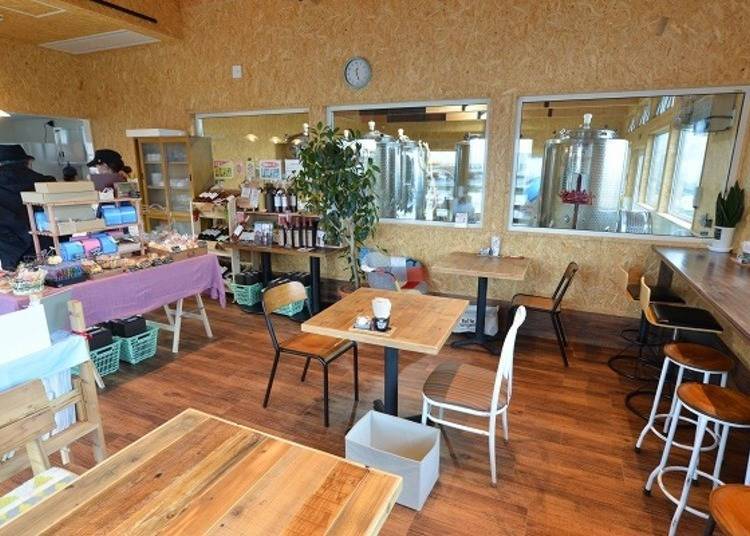
We have recommendations here as well! The jellies here are made using Steuben grapes produced in Tsuruta-machi. The Steuben grapes are inserted into the jellies and topped with whipped cream, followed by crushed jelly made using red wine from Steuben grapes for a lovely three-tiered arrangement. Let the rich flavor of the Steuben grapes wash over you as you enjoy this treat.
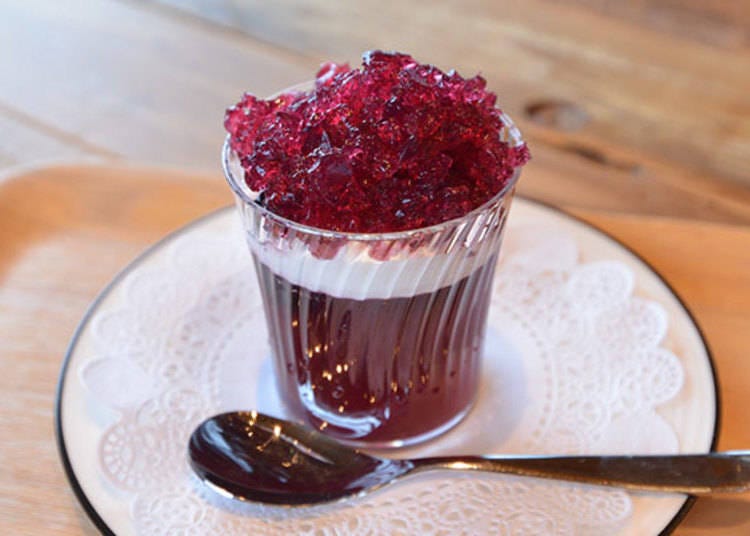
-
WANO WineryWANO ワイナリー
- Address 335-1, Tsuruta Koizumi, Tsuruta-machi, Kita-Tsugaru-gun, Aomori-ken
- Phone Number 0173-23-5703
Business hours: 10:00 a.m. to 6:00 p.m.
Closed on Mondays
Besides the places we’ve recommended, you can drop by “Michi-no-Eki Tsuruta: Tsuru-no-Sato Aruja,” a market for souvenirs from Aomori Prefecture, with a main focus on Tsuruta-machi.
One popular local food that you can’t get anywhere else is the “Bikkuri bun”, a bun so large that one person will be hard-pressed to finish it all on their own. The newly built tourist information center and local souvenir shops are in the vicinity, and you’ll be sure to make some new discoveries here too.
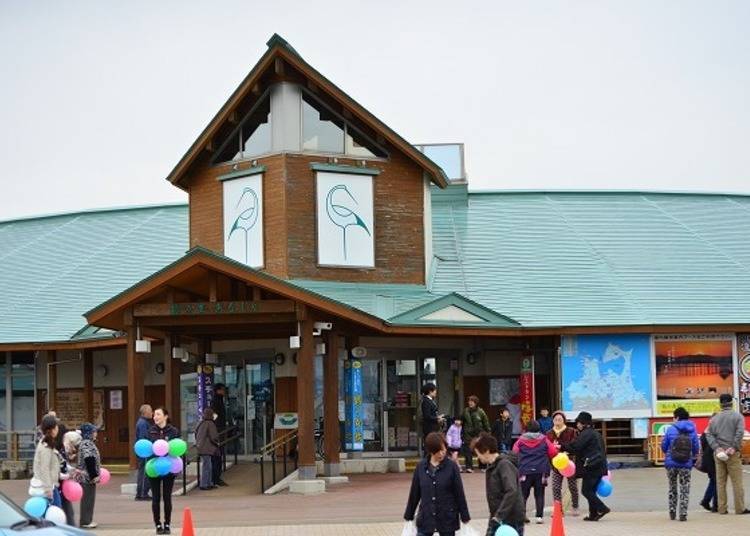
-
Michi-no-Eki Tsuruta: Tsuru-no-Sato Aruja道の駅つるた 鶴の里あるじゃ
- Address 176-1, Satomi, Sakai, Tsuruta-machi, Kita-Tsugaru-gun, Aomori-ken
- Phone Number 0173-22-5656
Business hours: 9:00 a.m. to 6:00 p.m.
Closed on New Year’s Day
So why not take a trip down to Tsuru-no-Mai Bridge and Tsuruta-machi? You can see splendid views at Tsuru-no-Mai Bridge all year round. Do be sure to see the beauty of the place with your very own eyes, a sight that will never cease to amaze you no matter how many times you go.
*This article was originally published in April 2020. Details may have changed since this time.
- Area
- Category
*Prices and options mentioned are subject to change.
*Unless stated otherwise, all prices include tax.
Popular Tours & Activitiess
Recommended places for you
-

Akiu Onsen
Hot Springs (Onsen) & Bath Houses (Sento)
Sendai And Matsushima
-

Hirosaki Park
Parks
Aomori, Hirosaki And Hachinohe
-

Zuiganji Temple
Temples
Sendai And Matsushima
-

Geibikei Gorge
Rivers, Lakes & Canyons
Morioka, Hiraizumi And Hachimantai
-

Ishiguro Samurai House
Historical Places
Surrounding Areas Of Akita
-
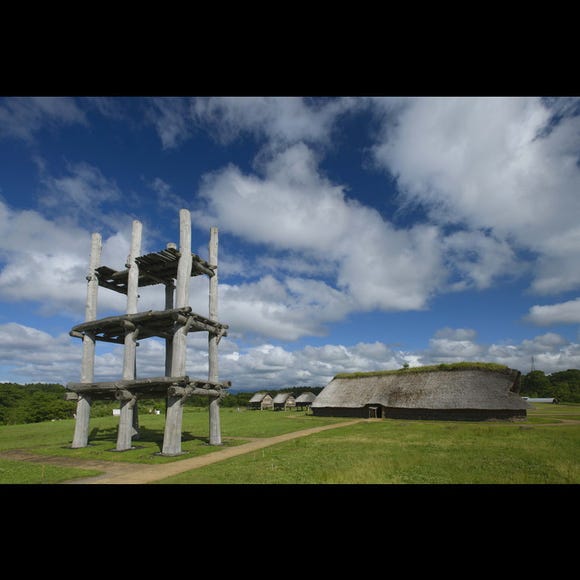
Sannai-Maruyama Site
Village Ruins
Aomori, Hirosaki And Hachinohe
-

Dining in Yamagata: Must-Try Foods & Top Restaurants Near the Station
by: ShiroKu inc.
-

Disney Meets Shinkansen: Two Themed Trains to Explore Japan's North and South in 2025
-

Shopping in Akita: 11 Must-Buy Souvenirs & Where to Shop Near the Station and Airport
by: ShiroKu inc.
-

Smart Ways to Avoid Crowds and Enjoy a Safe, Comfortable Trip to Myoko, Niigata Prefecture.
-

Shopping in Niigata: 9 Must-Buy Souvenirs & Local Sake to Take Home
by: ShiroKu inc.
-

What to Buy in Aomori? 11 Aomori Souvenirs Locals Actually Recommend
by: ShiroKu inc.
-

6 Surprisingly Cheap Things in Japan
-

The Best of Japan: 11 Major Cities Every Traveler Should Visit
-

We Board Japan's 'Setsugekka' Resort Train And Have An Incredible Journey Through The Heartland
-

Secrets to Shopping in Japan: Guide to Annual Sales in Japan & Where to Shop
by: Miyu Shimada
-

Visiting Japan's Miffy Cafe Will Make Your Heart Melt (Photos)
-

Kakunodate: Akita's Historic Samurai Town with Famous Cherry Blossoms
by: Ran Tanaka












